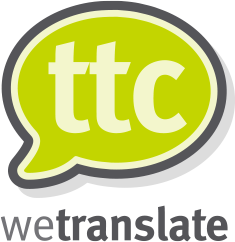
The terms “Scandinavian” and “Nordic” are often used interchangeably, causing confusion for those not intimately familiar with the region. In this blog post, we will explore the distinctions between these terms and shed light on the geographical, cultural, and historical factors that contribute to their usage. We will delve into the countries that comprise Scandinavia and the Nordic region, examining the intricacies that have led to the conflation of these terms. Additionally, we will touch upon the relationship between the Baltic countries and Greenland with regards to the Scandinavian and Nordic context.
Understanding the Geographical Perspective:
From a geographical perspective, the Scandinavian peninsula encompasses Norway, Sweden, and a small portion of Finland. This shared landmass creates a natural association between these countries. However, it is important to note that culturally and historically, the region has undergone changes, influencing the way we define it today. Finland, for instance, was once part of the Kingdom of Sweden, while Iceland belonged to Denmark. These historical ties have contributed to the overlapping use of the terms Scandinavian and Nordic.
Differentiating Scandinavian and Nordic:
While Scandinavian countries consist of Norway, Sweden, and Denmark, the Nordic countries encompass Iceland, Norway, Sweden, Finland, and Denmark. This distinction highlights that the term “Nordic” extends beyond the Scandinavian peninsula to include Finland as well. The inclusion of Finland is significant, as it adds a new layer to the cultural and historical complexities of the region.
Cultural and Historical Interplay:
The cultural and historical interplay among the Scandinavian and Nordic countries has further blurred the lines between the two terms. Throughout the centuries, these nations have influenced one another, shaping shared traditions, values, and even languages. The historical connections between Sweden, Norway, Denmark, Finland, and Iceland have been strong, leading to a natural tendency for non-Scandinavians to use “Scandinavia” when referring to all five countries.
The Emergence of the Nordic Countries:
In recent years, the term “Nordic countries” has gained traction as a unifying term encompassing all five nations. This development acknowledges the cultural, historical, and political similarities shared among these countries. The Nordic Council, an intergovernmental organization, promotes cooperation and dialogue among its member states, further solidifying the concept of a Nordic identity.
Baltic Countries and Greenland:
To compound the confusion, we must address the Baltic countries and Greenland. The Baltic countries comprise Estonia, Latvia, and Lithuania. Geographically close to Scandinavia, these nations have had extensive cultural and historical interactions with the Nordic countries. However, they are not considered part of Scandinavia or the Nordic region.
Greenland, on the other hand, is a territory politically linked to the Kingdom of Denmark. Despite its proximity to North America, Greenland falls under the Nordic context due to its association with Denmark. Greenland’s cultural and historical ties to the Nordic countries, coupled with its political connection, further entwine its identity within the broader Nordic framework.
In conclusion, while the terms “Scandinavian” and “Nordic” are often used interchangeably, there are distinctions that should be acknowledged. Scandinavian countries refer specifically to Norway, Sweden, and Denmark, while the Nordic countries include Iceland, Norway, Sweden, Finland, and Denmark. The geographical, cultural, and historical factors have contributed to the overlapping use of these terms. The Baltic countries and Greenland, though related to the Nordic context, are separate entities in their own right. Understanding these nuances helps us navigate the rich tapestry of the Scandinavian and Nordic regions, appreciating the diversity and interconnectedness among these nations.
Do you need a partner to help you navigate similar cultural nuances as you walk through your global journey? Give us a call at +44 (0)1245 216930 or email info@ttcwetranslate.com


